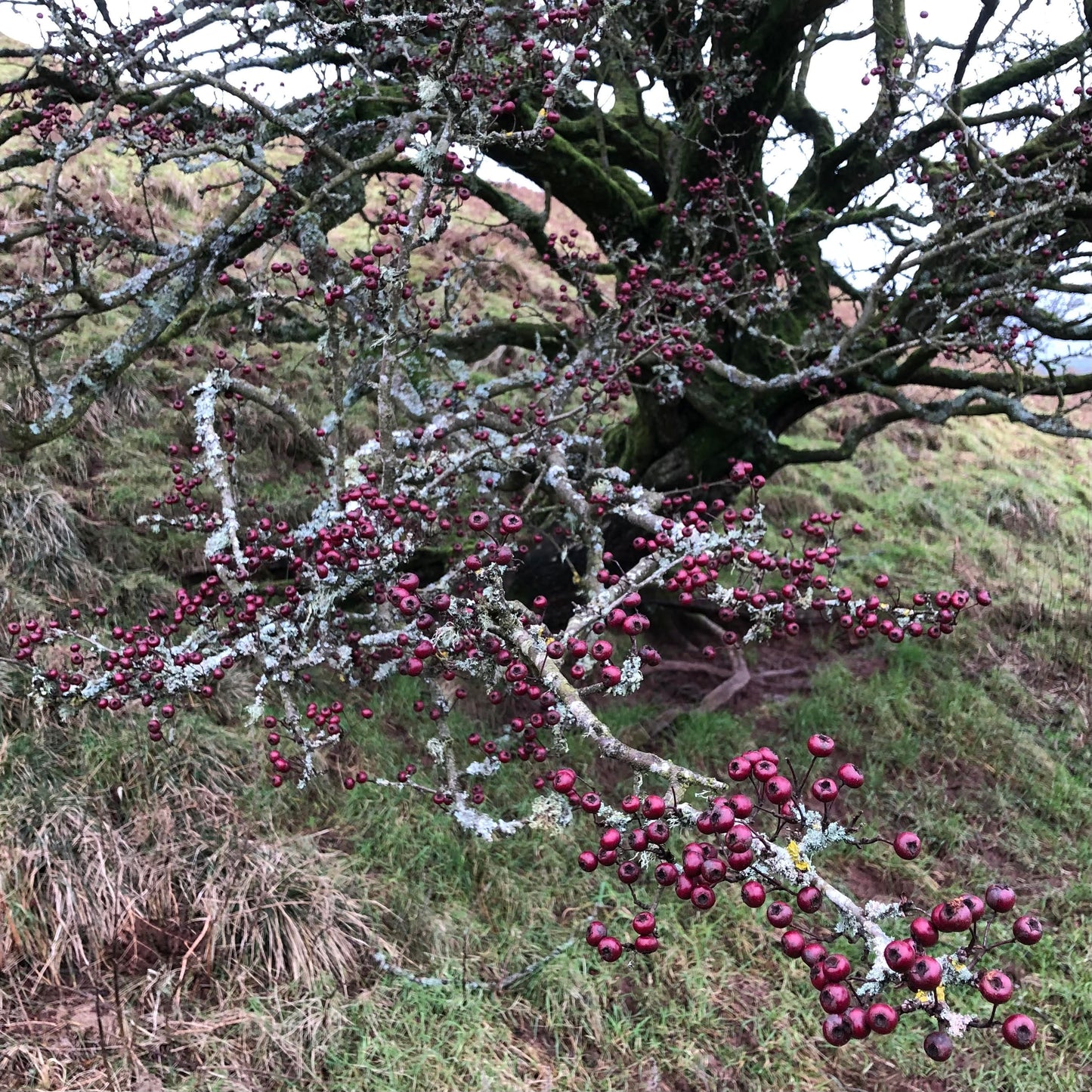Habitat Aid Ltd
Hawthorn (Crataegus monogyna)
Hawthorn (Crataegus monogyna)
Prices include VAT (when applicable) and delivery to mainland UK.
Couldn't load pickup availability
Hawthorn (Crataegus monogyna)
Hawthorn, Crataegus monogyna, is a fast growing small tree of hedgerows, beautiful in flower. As a hedge plant it lays well and forms a good stockproof - and people proof - barrier. It grows fast (hence "Quickthorn"), it's easy to grow, and tolerates nearly all conditions including shade. Although also called the "May Tree", or "May thorn", Hawthorn will flower anytime from March to as late as June, at higher altitudes. It thrives in these kind of exposed situations. It has always been a popular hedge plant; after painstaking research the Victorians planted new hedges exclusively with it along railway embankments. Unlike Blackthorn it does not sucker, which makes it ideal for a garden hedge. We have another native plant which is closely related and preceded it - Midland hawthorn (Crataegus laevigata). It's much rarer and hybridises freely, so is (almost) impossible to find commercially.
History
There is evidence of Hawthorn being used in hedges since the Iron Age. Its English name seems to have come from the Saxon words for hedge or enclosure and thorn. During the Enclosure movements of the 18th and 19th centuries it became very prevalent as a hedge plant; 200,000 miles of Hawthorn hedge were planted. In Anglo Saxon times it was often used as a boundary marker, and some Medieval trees still live on today. Like Blackthorn, foresters valued Crataegus in establishing new woodland - acting as a barrier to keep deer and other grazing animals off broadleaf saplings.
Mythology
Hawthorn is still known in some parts, including Ireland, as the Faerie Tree. May Day coincided with the pre Christian Spring festival of Beltane, and Hawthorn has many associations with the hidden world. Its blossom also lent it the name "Whitethorn", but is considered unlucky to bring into the house. Crataegus monogyna smells much more pleasant than laevigata, but recent investigation has shown that they both release the same chemical - and smell - that recently dead bodies do. There must be a connection.
Value For Wildlife
Its numbers and abundant flowers mean Crataegus mongyna is a very significant source of Spring nectar and edible winter berries if sympathetically managed. Hawthorn is a foodplant for a number of butterfly and moth species too, and is generally a wonderful wildlife plant. Apparently a total of 149 invertebrate species eat it (the new leaves, petals and haws are edible for humans too and apparently high in anti-oxidants, but pretty tasteless, if I'm being honest! Don't eat the haws raw, as they might make you ill; they're best made into wine or jam). Additionally there are all the pollinators who visit its blossom. Its habit makes it an ideal refuge and nest site for small birds and mammals, who feast on its red berries. The vast numbers of insects it attracts in spring also mean hedges with a lot of Hawthorn have higher bird populations.
Hawthorn is an important constituent of our conservation hedge mix, but if you wanted to use it on its own or for a hedge of your own design, reckon on 5 plants per linear metre in a double staggered row. Plant 50cms or wider apart. We recommend using Rootgrow to aid fast and good establishment.
Plants For Sale
Like all our native trees and hedging, our Hawthorns have UK origin and provenance - that's to say they're British grown using seed from trees here. We sell smaller 2 year old whips, 60-90cm, in multiples of 5. They're grown in either Yorkshire or Kent.
This year we've also started selling smaller cell grown plants. These are really helpful for planting late in the season, from March to May.
Suppliers: Oakover Nurseries, RV Roger, RJ Trees, Chveiot Trees. All these growers are Plant Healthy certified nurseries.
See our planting and size guide for details and tips on planting. Our Hawthorn plants are all supplied bare root, and are consequently available for delivery from November until March (please ask if you are interested in pot grown plants). During the lifting season there may be up to a month's delay between placing the order and dispatching, due to weather conditions or pressure of orders, which are dealt with in date sequence. Orders for Crataegus monogyna placed between March and October are confirmed for dispatch from November.
Have a look at our videos on what to do when your plants arrive and how to plant a bare root tree. Please ask about larger trees; we can often supply them but will need to quote on an individual basis as carriage varies so much.















